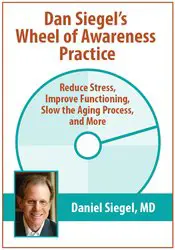- Home
- Wheel of Awareness
Wheel of Awareness
Inspired by Dr. Dan Siegel's "Wheel of Awareness" concept. The central hub represents awareness, and the rim symbolizes the points of consciousness. The spoke shows focus from the hub to a specific area on the rim, all in a calming, minimalistic style.

What is the Wheel of Awareness?
The Wheel of Awareness, developed by Dr. Dan Siegel, is a mindfulness practice designed to integrate consciousness. It uses a metaphorical wheel with a hub representing awareness and a rim that represents various aspects of life, such as thoughts, emotions, and relationships. The practice helps individuals focus attention and foster greater self-awareness.
Benefits of Practicing the Wheel of Awareness
The Wheel of Awareness promotes mindfulness, enhances emotional regulation, improves focus, and nurtures overall well-being. It supports a deep connection between mind, body, and relationships, helping reduce stress, increase resilience, and strengthen empathy.
How to Practice the Wheel of Awareness
Begin by sitting in a comfortable position and visualize the wheel. The hub represents pure awareness, while the rim is divided into segments that represent various mental processes—senses, thoughts, and emotions. Move your focus around the rim while staying grounded in the hub, observing different experiences without judgment.
Science Behind the Method
The Wheel of Awareness integrates principles from neuroscience and mindfulness, emphasizing how focused attention can reshape brain function. Research shows that this practice increases neuroplasticity, improves emotional regulation, and promotes well-being by creating greater harmony between different areas of the brain.
Wheel of Awareness Resources & Tools
Digital Seminar
Wheel of Awareness Practice: Reduce Stress, Improve Functioning, Slow the Aging Process, and More
In this workshop recording, interpersonal neurobiology expert Daniel Siegel will explore how advances across a range of disciplines—including brain science, psychiatry, attachment theory, quantum physics, and spirituality, to name just a few—have expanded our conception of consciousness, and what this means for the practice of psychotherapy.
Then he’ll guide you through his revolutionary Wheel of Awareness exercise. The Wheel can be used to reduce stress, improve cardiovascular and immune system functioning, and slow the aging process. It incorporates the three pillars of mental training: focused attention, open awareness, and kind intention. This session will demonstrate how to incorporate it into therapy to cultivate more meaning and connection in clients’ lives.
